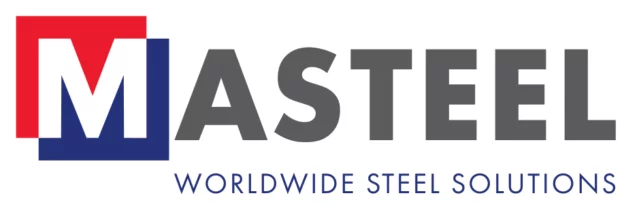Updated: 23/09/2022
Plasma cutting is an established method of metal profiling that has been available to engineers for decades. It emerged in tandem with the plasma arc welding (PAW) technique in the 1950s, and the two remain closely linked today. In this blog post, Masteel aims to offer a comprehensive overview of plasma cutting, from its earliest iterations to its modern capabilities.

What is Plasma?
Plasma is often referred to as the fourth state of matter, after solid, liquid and gas, in which an ionised gas species becomes highly conductive to electricity. It makes up around 99% of our universe and is heavily researched by scientists for its vast applications.
Plasma is commonly measured in Kelvin (K) or electron volts, which measures the thermal kinetic energy per particle, as consistently high temperatures are required to sustain the plasma’s characteristic ionisation. This relationship between conductivity and temperature is fundamental to the plasma cutting process.
What is Plasma Cutting?
Plasma cutting is an essential thermal cutting process used to melt and cut through electrically conductive materials by using an accelerated jet of compressed gas (compressed air, nitrogen, argon, etc.) and a consumable wire electrode as the two primary feedstocks of the cutting process. The electrode sends a high electrical charge through the gas, raising its temperature to the point of ionisation to generate extremely hot plasma (~20,000°C). This plasma is directed through the cutting tip to create a highly focussed beam, with velocities approaching the speed of sound.
The ultra-hot jet of a plasma torch rapidly melts through metal. At the same time, an additional stream of shielding gas surrounds the cutting point to remove molten material and preserve process precision. It is worth noting that for plasma cutting steel, the most commonly used plasma gas in the industry is oxygen because it provides the best cut quality of mild steel.
Brief History of Plasma Cutting
Although plasma cutting is now entrenched in the metalworking sector, the process described above was only developed in the mid-1950s. Early efforts to generate ultra-hot plasma jets were blighted by poor cutting speeds and quality, alongside poor efficiency. The first consumables included high-density tungsten, which readily reacted with oxygen, significantly reducing its service life. Engineers aimed to overcome this using a liquid turbine, which injected water into the torch to increase arc stabilisation and reduce electrode degradation.
A series of innovative steps forward were taken throughout the ‘70s and ’80s, practically transforming the technology into the accessible method of metal profiling that we are familiar with today. Modern innovations are even considering exploiting plasma cutting to profile insulating materials, a market segment currently monopolised by laser cutting.
Advantages and Disadvantages of Plasma Cutting
Advantages
Plasma cutting has found widespread use in small- and large-scale metalworking applications, from raw sheet metal profiling to scrapping operations. As a result, being unable to cut insulators is rarely a limiting factor for the technology’s primary markets. Plasma torches can cut thin and thick sheet metals (<76mm) at high speed for both low and high alloy sheets of steel and are generally available in significant industrial CNC plasma cutting formats for sizeable cutting areas.
Disadvantages
Plasma cutters rely on electrical conductivity, making profiling insulating materials impossible. It is currently limited to cutting conductive metals like stainless steel and aluminium. Additional safety training is required to operate plasma cutters as they generate fumes, gases, noise, and ultraviolet (UV) radiation. Experienced professionals should always be equipped to handle these process by-products.
Applications of Plasma Cutting
Plasma cutters provide a precise and high-cut quality of stainless steel in a wide range of applications where metals must be cut using either a plasma cutting machine or a manual plasma cutter.
Mechanical plasma cutters can be used with a punching, laser or robotic system with cutting tables. This could be to manufacture gates and signs or on construction sites or scrap yards. Plasma cutting can also be used for design projects.
Plasma Cutting Services from Masteel
Masteel provides a robust plasma cutting service for stainless steels and chemically-sensitive metals that are unsuitable for oxyfuel processing. We can produce surgically-precise, large-area metal sheets for a broad range of application areas.
Contact a member of the Masteel team today to learn more about our plasma cutting services.
